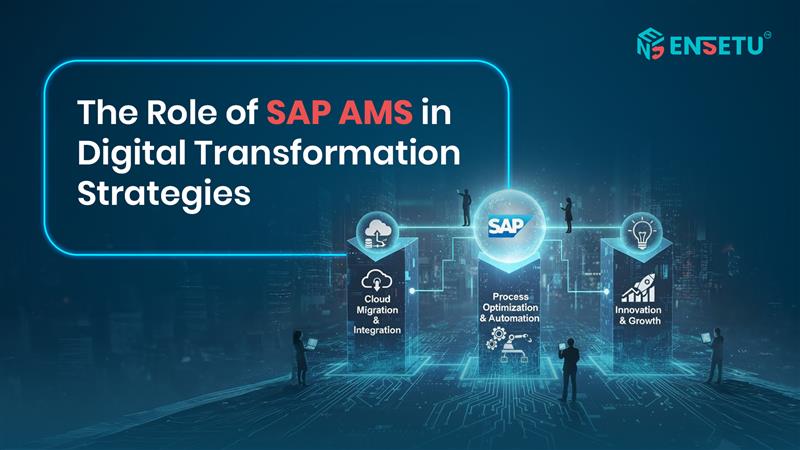
Digital transformation is no longer an abstract ambition. It has become a key strategy for companies that want to remain competitive and be prepared for the future in a rapidly changing marketplace. Organizations throughout India are investing substantial resources in cloud journeys, automation, and analytics, but many struggle with the challenge of sustaining and owning this transformation over time.
At the center of this transformation is SAP—the system that enables mission-critical enterprises to operate key functions in finance, HR, procurement, and supply chain. Implementing SAP initially modernizes operations, but continued improvement and optimization determine whether an organization achieves true digital maturity.
What is a Support Hub?
A Support Hub is a centralized support model that goes beyond incident and service request management. It brings together multiple aspects of enterprise support to deliver greater efficiency, visibility, and accountability across the organization.
The Support Hub focuses on several key areas:
Incident and request management: Efficiently captures, prioritizes, and resolves user issues in a structured and timely manner.
Proactive engineering and stabilization: Identifies recurring issues, performs root-cause analysis, and prevents future problems.
Integration and API orchestration: Ensures smooth communication across business systems and consistent data flow.
Governance and performance management: Defines metrics and reporting aligned with enterprise goals.
Automation and knowledge management: Uses automation to reduce manual effort and improve resolution time with analytics-driven insights.
Unlike traditional support models that separate reactive support, integration, and governance, the Support Hub combines these functions under one accountable structure, encouraging collaboration and operational stability.
Why Enterprises Need the Support Hub Model Now
The traditional SAP Application Management Services (AMS) model, focused on ticket-based support, is no longer sufficient. Modern enterprises operate in an environment that demands agility, innovation, and real-time decision-making. The Support Hub offers an intelligent, collaborative, and outcome-driven approach to AMS.
1. Complexity of Technology Environments
Organizations today operate across cloud, on-premise, legacy, and third-party systems. Managing these without integration leads to inefficiency. According to McKinsey, integrated operating models can reduce cross-functional bottlenecks by up to 30% and accelerate transformation without additional costs.
2. Focus on Outcomes, Not Inputs
Businesses measure success through uptime, delivery speed, cost predictability, and business continuity—not ticket counts or hours logged. Research from the International Journal of Information Management shows that structured IT service management (ITSM) improves alignment with business goals by up to 40%.
3. Faster Innovation Cycles
Competitive enterprises must deliver new features faster without sacrificing stability. The Support Hub helps achieve an optimal balance between innovation and reliability.
4. Automation and AI Opportunities
With advances in AI, machine learning, and automated monitoring, routine support tasks can be handled more intelligently. A centralized Support Hub maximizes the value of these tools across the enterprise.
Key Capabilities of an Effective Support Hub
An effective Support Hub integrates multiple capabilities into a cohesive, outcome-driven framework that ensures scalability, stability, and alignment with business goals.
1. Centralized Service Desk with Defined SLAs and Tiers
Acts as the single point of contact for all support requests, standardizing ticket triage and resolution with defined SLAs and tiered support structures.
2. Engineering Proactivity and Change Stabilization
Focuses on proactive problem-solving, identifying root causes, and implementing preventive measures. It also stabilizes systems during updates and migrations to reduce downtime.
3. Integration and API Orchestration Layer
Facilitates seamless communication across systems and applications, reduces duplication, and ensures consistent, secure deployment of changes.
4. Governance and Performance Reporting
Provides clear accountability and transparency through defined roles, responsibilities, and data-driven insights. This alignment helps improve decision-making and continuous improvement.
5. Knowledge Management and Automation Tools
Maintains a centralized knowledge base for faster issue resolution and empowers users with self-service options such as chatbots and automated workflows.
6. Flexible Operational Model
Recognizes that every enterprise is unique. The Support Hub allows flexibility in support structures—be it ticket-based, co-managed, or dedicated—to ensure scalability and cost efficiency.
Common Challenges and How to Overcome Them
Building a Support Hub can bring immense benefits, but the transition also presents challenges. Here’s how organizations can address them effectively:
1. Resistance to Change
Teams often resist adopting new models. Engage stakeholders early, run pilot programs, and showcase quick wins to build confidence and trust.
2. Bottlenecks from Centralization
Over-centralization can slow decisions. Empower subject matter experts with operational autonomy while maintaining clear escalation paths for governance.
3. Tool Fragmentation
Using too many tools for ticketing and monitoring leads to inefficiency. Audit existing tools, consolidate platforms, and choose those that integrate easily and support automation.
4. Skill Gaps
Support Hubs require cross-functional expertise. Invest in continuous learning, mentoring, and skill rotations to build collaborative, system-oriented teams.
The Future of Enterprise Support
The Support Hub model represents a fundamental shift from reactive problem-solving to a proactive, strategic approach. By combining incident management, integration, governance, automation, and knowledge, it empowers organizations to achieve greater reliability, agility, and cost efficiency.
For enterprises navigating increasing technical complexity, faster innovation cycles, and tighter budgets, the Support Hub model offers a clear and sustainable path toward true digital maturity.